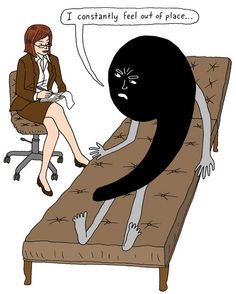
With this post we continue our series on using commas. In Parts 1 and 2, we talked about the Oxford, or series, comma. In Part 3, we talked about commas in compound sentences. Today, we are talking about putting commas after introductory words, phrases, and clauses in sentences, otherwise known as introductory “stuff”!!!
A common way to write a sentence is to start with the subject followed by the verb. However, if you write all your sentences this way, your writing will be boring. So we often begin a sentence with something other than the subject, and this other thing often is followed by a comma to ensure that the sentence is clear and easily readable.
Here are some samples of sentences that begin with the subject and verb:
- I decided to travel across the United States later this year.
- The committee and I think that the meeting should be rescheduled for later in the month.
- The school is having an open house early next week.
Let’s look at those sentences with something added before the subject:
- Finally, I decided to travel across the United States later this year. (word)
- After our discussion the committee and I think the meeting should be rescheduled for later in the month. (phrase)
- Because it is the beginning of a new academic year, the school is having an open house early next week. (clause)
So, when do we need a comma after an introductory word, phrase, or clause?
Word:
Generally, we put a comma after an introductory word. Here are some examples of introductory words:
- Transition words like first, next, last, finally, however
- Yes and no
- Interjections like well and oh
- A person’s name if you are talking to a person (known as direct address)
- Random words like indeed, fortunately, and otherwise (sometimes)
Examples:
- First, I would like to show this slide presentation.
- Yes, I will go with you.
- Well, I don’t think I can.
- Mary, please clean your room.
- Yes, Mary, I think you should apologize.
- Fortunately, no one was hurt.
- Indeed I think you should go! (If you really wouldn’t pause after a word like this, you don’t need to put a comma, but most of the time people seem to use the comma. It is fine to use it.)
Phrase:
Phrases a small groups of words that go together. There is usually a comma after an introductory phrase. It does depend upon the type of phrase, though.
Prepositional phrases are made up of a preposition, sometimes an article, and a noun or pronoun: down the stairs, in the house, along the path, at school, etc.If you have a short prepositional phrase at the beginning of the sentence, you really don’t need a comma. If you have a longer, ore involved prepositional phrase, or two of them in a row, use a comma. Here are some examples:
- In Paris we saw the Eiffel Tower.
- On top of the refrigerator, a mouse sat staring a me.
- Down the stairs and out of the house, she ran.
Notice that after the phrase or phrases there is a subject. In the sentences above, the subjects are we, a mouse, and she. If there is a verb directly after the phrase, DO NOT use a comma because the phrase is serving as a subject or the sentence is simply in an unusual order.
- On top of the refrigerator sat a mouse.
- Down the stairs and out of the house ran the dog.
Participial phrases usually contain a verb, ending a –ing or –ed, that is being used to describe the subject that comes right after it. Use a comma after such a phrase (or even a lonely participle, like the middle example below) if the subject immediately follows.
- Racing across the room, she almost fell on her face.
- Sulking, the girl was being punished for her tantrum.
- Sitting in a big, comfy chair, I was reading my book.
The subjects in those sentences immediately follow the participle or the participial phrase: she, the girl, and I. Once again, don’t put a comma if the phrase is followed by a verb (in which case it is probably another kind of phrase, but we don’t need to know what kind!)
- Racing across the room is dangerous.
- Sulking is not a good habit.
- Reading in my big, comfy chair is my favorite thing to do on a rainy day.
So — if the words in the introductory phrase are followed by a verb and appear to be taking the place of the subject, don’t put a comma. But if the subject follows your phrase, use the comma.
Clause:
A clause is a group of words like a phrase, but one that contains both a subject and a verb and is generally longer than a phrase. A clause at the beginning of the sentence is followed by a comma — unless it is followed by a verb!
Most clauses that appear at the beginning of a sentence begin with words like because, although, if, when, whenever, after, before, since, wherever. Many times, these clauses make just as much sense at the end of the sentence, but usually we don’t use a comma when they are at the end (or middle). But that is another post.
- Because I really want to play the piano, I am going to take lessons.
- Although it is raining, I am going for a walk.
- Wherever you go, I will follow.
Once again, in sentences where a verb follows the clause, the clause is being used as a subject and does not have a comma:
- Where you are going is none of my business.
- After I eat dinner is when I want dessert and coffee.
Most of the time you won’t find clauses used as subjects.
So, as a general rule, introductory information in a sentence is followed by a comma.The only time it is wrong to follow it with a comma is when the verb is next rather than the subject, because if the verb is next, the introductory words are likely being used as the subject — and we don’t put a comma between subject and verb!
*********************************************
Grammar Diva News:
50 Shades of Grammar: Scintillating and Saucy Sentences, Syntax, and Semantics from The Grammar Diva is currently at the designer’s house, and I am still hoping for a release at the beginning of December. Add it to your holiday gift-giving list.
I recently did two radio interviews, one on local public radio KRCB and the other on BlogTalk radio. The one on Blog Talk Radio will be aired on Sunday, November 22 at 2:30 p.m. PST. The KRCB has already been aired and the link here goes to the podcast.
My books may be for sale at the Healdsburg Holiday Gift Gallery. And even if they aren’t, other local authors and artists will be selling their fabulous wares!
I will be a panelist discussing editing at the December 12 meeting of BAIPA, the Bay Area Independent Publishers Association.




I noticed that you routinely put commas after using “so” as an introductory word. I struggle with that. I understand that the “rules” say you should do that, but I see many instances where very successful writers omit the comma. And sometimes they seem to get in the way. So, I made my own style manual. My rule is to use the comma unless it sounds awkward when read aloud; in that case, it should be omitted. So do it as you please.
Thanks for the comment. I didn’t realize I was putting commas after “so.” However, since “so” until recently wasn’t to be used to start sentences at all, there is probably no rule. Comma rule are pften a gray area anyway, So, I would say either way is OK. So that is my opinion!